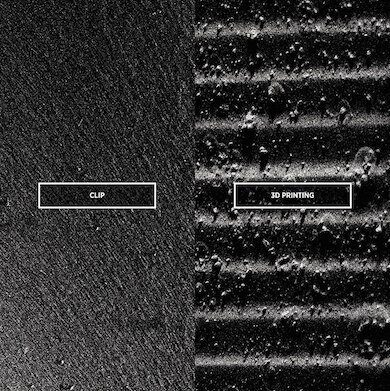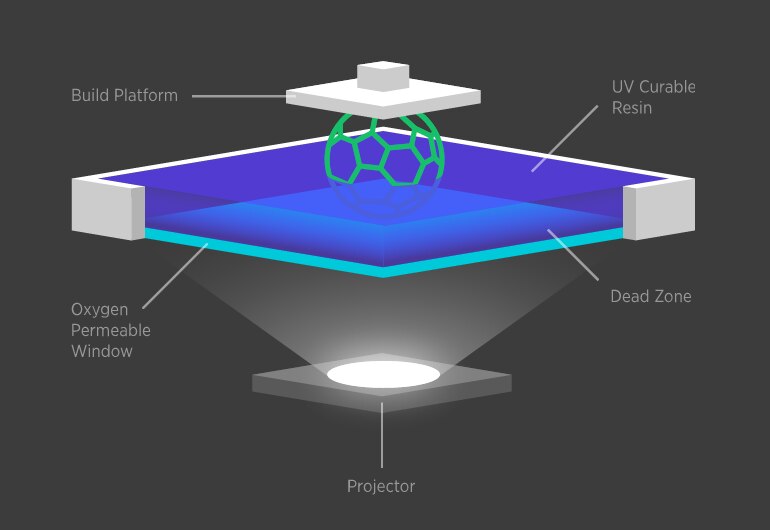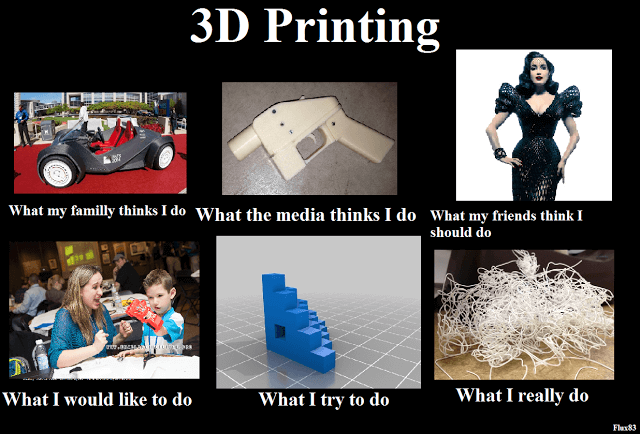Tunable photochemical process for the win
Additive manufacturing processes such as 3D printing use stepwise layer-by-layer approaches to object fabrication (existing technology is really 2D printing, over and over again). As a result, conventionally made 3D printed parts take many hours to produce and are mechanically weak due to their shale-like layers (mechanical properties vary depending on the direction the parts were printed).
Now, 3D printing hopes to break out of the prototyping niche it has been trapped in.
There’s a new, innovative approach to polymer-based 3D printing that promises to advance the industry. Complex solid parts can be drawn out of the resin at rates of hundreds of millimeters per hour. These print speeds allow parts to be produced in minutes instead of hours.
State-of-the-art in layerless 3D printing
Carbon3D has come up with the Continuous Liquid Interface Production technology (CLIP) that harnesses light and oxygen to continuously grow objects from a pool of resin instead of printing them layer-by-layer.
- 25-100 times faster than conventional 3D printing
- Objects with consistent mechanical properties
- Enables a broad range of polymeric materials
Grows solid objects out of liquid baths
By carefully balancing the interaction of UV light, which triggers photo polymerization and oxygen, which inhibits the reaction, CLIP continuously grows objects from a pool of resin. At the heart of the CLIP process is a special window that is transparent to light and permeable to oxygen, much like a contact lens.
By controlling the oxygen flux through the window, CLIP creates a “dead zone” in the resin pool just tens of microns thick (about 2-3 diameters of a red blood cell) where photopolymerization can’t occur. As a series of cross-sectional images of a 3D model is played like a movie into the resin pool from underneath, the physical object emerges continuously from just above the dead zone.

“Our CLIP technology offers the game-changing speed, consistent mechanical properties and choice of materials required for complex commercial quality parts”, said Dr. Joseph DeSimone, CEO and Co-Founder, Carbon3D.
Here’s a feast for your eyes before you download the full report, published in Science Magazine. Or just chill out and have a look at this awesome meme made by Reddit user Flux83:
What will you print? Or shall we say grow now?


























